Note
Hi! I asked the most recently responded to question and this was the photo of the tayū with the untied obi i meant! Sorry if it was worded in a confusing manner

Hi there @fl3shisthelaw
Thank you for the pic. I must admit i was a bit confused at first too. I have seen this pic of course, it's on rotation in the public domain. But i have never examined it closer and i'm happy i get the chance to now!
What i did first is examine the model: She has some hints of Tayuu aesthetics: Red beaded bira kanzashi, turned collar, Tayu koma Geta.
Then there is a lot of Oiran about her too: The bekko kanzashi, the padded Uchikake, the Waterfal obi.
So what i did is reverse google search and i came to this source:
Not sure if it's the original but you get to see the whole picture.
So the source add the info that she is a courtesan and in kanji it would be marked as 遊女 and if you search for that it will take you to the Oiran searches. Kanji for Oiran is 花魁 and Tayuu is 太夫.
So we're at a dead end essentially but i have two theories.
Either we're talking about an Oiran or we're talking about an Osaka Tayuu. I'm not entirely sure about the latter as i have been a bit out of the loop with deep research so i don't want to lean into wild speculation. To stay on the safe side i would suggest we're looking at a Tayuu but i'm not convinced entirely. Please feel free to chime in!
What do you think about the pic?
36 notes
·
View notes
Note
Hi. I’ve seen a few old photos of tayū wearing a Maru obi, and I’m wondering if this style of obi was reserved for a specific occasion or to show the stage of training a tayū was in? I was a little confused by it as I thought tayū only wears a kokoro or bunko obi.
Hey Anon
Maru obi are the type of obi used to create Kokoro knots for example. I wonder if you might send a pic so we can examine together?
Stay safe out there
5 notes
·
View notes
Note

I recently came across this old image of a oiran and i dont believe ive ever seen another oiran with a similar pony tail hairstyle before. I was wondering if you recognise it all?
Hello @fl3shisthelaw
Thank you for your ask. The term "Sagegami" is used as a catch all term for any Nihongami with a hanging ponytail. It can be read as "Hair hanging down the back" (下げ髪)
They are remnants of the Heian era when loose and long black hair was considered ideal in noble houses. Some distinct Nihongami have survived that are more distinct like the "Kottai Sagegami", prefered by Tayuu, the "Taregami" (垂れ髪) or Suberakashi (垂髪).
By the Edo period, Heian style hairstyles were already historic references so it harkened back to a golden age of noble culture. Any hairstyle with a long ponytail had this unique dignified air to it among a large collection of updos, which were very normal during the Edo period. Certainly something a Tayuu and later on an Oiran would have loved to do is imply any connection to noble status.
From what i have read, the Sagegami was one of more mature hairstyles, reserved for established Tayuu and Oiran.
Hope this helps. Thank you for dropping in.
31 notes
·
View notes
Note
What are some of the Oiran hairstyles? and what are the differences between them? I know there was multiple but i cant find much info on Oiran’s hairstyles outside of the butterfly hair. Thanks!
Hello Anon
Oiran hairstyles are now synonymous with the Hyogo family branch of Nihongami. Most famously the Date Hyogo, the Tate Hyogo and the Yoko Hyogo. Would a Tayuu have worn some variation of these too? Certainly. Would an Oiran wear any other trending hairstyle? Of course. But the iconic look of the Oiran has been closely associated with the "Bunny ears"/ Butterfly hair. So i guess the answer is: Oiran hairstyles could have been any type of Nihongami but for sure we associate the Oiran with the Hyogo!
My theory is that the golden age of the Oiran, around 1770, many of them got the Hyogo and helped cement it as "their" signature look through Ukiyo-e. As the Hyogo was reserved for the most high ranking girls, it was naturally meant to represent them.
Hope this helps
12 notes
·
View notes
Note
Hi! How would a girl become a tayuu/ enter the training for it in edo japan? Ive found out girls were sometimes sold by parents to become an oiran and i was wondering if it was similar with tayuu? im having a hard time finding anything
Hello there Anon
We have to distinguish the "career path" for Oiran from Tayuu in this case.
Oftentimes any girl had the chance and ability to become an Oiran because their main attributes were Charm and looks. For Tayuu we're talking about a whole different set of skills: Here the focus was on their skill, intelligence, esprit, learnedness, character, sense of style and many more important factors.
We know from quite a few famous Oiran, and even most famously a Tayuu herself; Katsuyama, that she was a simply working girl in a bathhouse/brothel/teahouse when she was discovered and promoted to become a high ranking Tayuu. Whatever that meant at the time. We need to take into account that the term "Tayuu" was fluid throughout the centuries, far removed from the Tayuu we know now. Some girls were Tayuu through merit, some through luck... But still! The title of Tayuu was reserved for special girls in one sense or another. One thing that set the Oiran and Tayuu apart was that a girl might be promoted to Oiran at 23 while a Tayuu usually went the regular path from Kamuro to Tayuu without skipping any steps. A lot of time and money was invested in a Tayuu so rarely you had any parvenues.
Tayuu usually got into the game pretty early on from the tender age of 3. How did they get in? Yes, they got sold into an okiya or sometimes born into it by another great Tayuu.
Many Kamuro came from the best type of background: Early on from Kuge (aristocracy) and later on from Bushi (Samurai). Some of them were daughters of monks or nuns, some of them simply pretty town girls from merchants that got their foot in the door. A lot of emphasis was placed into their refined background and most oftentimes a little girl that had the pedigree automatically went into the care of a popular Tayuu. On the other hand many Kamuro, even though well bred, simply did not make the cut so a lot of weeding out needed to be done to get the right sprout.
Selling a daughter to a good okiya was not considered the end of the world. Most often times it was quite pragmatic: Usually the first born was married off into a good household, sometimes the following girls would become nuns or stay in the household if not married off. But if you were well to do enough to have contacts to Tayuu-houses, hell yeah would you give your daughter into their care! It meant one mouth less to feed while they would be introduced into courtly life. Specially for high ranking families with little funds, this was a really good idea.
I know "selling a daughter" isn't something we would find nifty these days but back then it wasn't even that bad a deal.
Feel free to add. What do you think? Was it a good idea to sell a daughter to a Tayuu-Okiya?
20 notes
·
View notes
Note
Another Question! According to Aoi Tayu the steps of becoming a Tayu is as follows: Kamuro, Shome, Tenjin, Furisode-Tayu. I aleady asked @Gionbubu on twitter and he says Tenjin wore a similar outfit to Tayu. I would like to know more about the world of Shimabara as I find it to be less documented than its Yoshiwara counterpart (and is there even research on Shinmachi?). What are the roles of Shimabara, what are their clothings,hairstyles and traditions. I know that the Tenjin were part of the monthly fair at the Kitano Tenmangu Shrine every 25th of the month, some sources state that there used to be a Tyu Dochu every 21st of the month (but you only state 3, and other state every season). I would like to know these types of classifications and traditions please.
Hello again @bahandingbulawan
I agree that Tayuu traditions, specially so the more mundane and niche ones like monthly dochu and Tenjin-hairstyles are under researched and hard to come by. At the moment i'm not into doing intricate research so i cannot give you any answers. I encourage you to dive in, at it is fascinating topic for sure. I myself went in blind too and found that it was absolutely worth my time, as intense as it was. I simply had more time during the pandemic to go through and translate snippets of crumbs throughout the internet. Be sure to let us know if you find something interesting ^-^
Stay safe out there
4 notes
·
View notes
Note
Hello, 3rd Question! Are there any specific hairstyles of Tayu and their lower ranks (Kamuro, Shinzo/Shoume, Tenjin...) from Osaka and Yoshiwara? You also mentioned before that the misedashi (i forgot the specific term) The onee-san Tayu would wear more elaborate hairstyles across the week ultimately ending with the Sagegami hairstyle.
Hi there @bahandingbulawan
To give a complete answer would need a lot of research for me at this moment in time so i'd rather just direct you to my Nihongami posts. Some of them hint at an origin or tradition outside of the Shimabara.
Sorry to cop out like this. But i don't want to give a misleading answer.
3 notes
·
View notes
Note
Hello same person again! I found this video of a Tayu Dochu from 1911. I shared this to @gionbubu on twitter and Aoi Tayu on instagram. https://www.youtube.com/watch?v=ot0mMY9Pfwg&t=319s&ab_channel=BFI
Thank you @bahandingbulawan
For sending this in. It was quite interesting to see the two different Tayuu interacting with their surroundings. Some things i noted were the presence of the Hanaguruma, the flower chariot at the beginning of the procession. These chariots carrying exquisite vessels of Ikebana creations are displays of virtues like poetic sensibilities, wealth, romantic prowess and imperial connections: All very Tayuu-coded. One could argue it was like a version of a Tayuu herself, a stand-in so to speak to elongate the procession and add more spiritual weight to it.
The first Tayuu looked very focused to me, and also very meticulous in her walking, trucking along like a well oiled machine. The second Tayuu seemed a bit more flustered to me, her Hikifune was clearly doing her best to keep this boat afloat. This Tayuu looked like she was struggling a bit with her volume while the helper kept fussing and arranging. Interesting to note also that each Kamuro has her own handler as well. Which i wasn't aware of was so common. It's quite normal to see modern Hikifune gently nudge Kamuro during the dochu as they clearly don't get a lot of routine these days. But i would have imagined Kamuro of yore to have more practice. Maybe it was also a question of keeping these girls safe and focused too. A lot was invested in these little princesses so they needed to keep from mingling too much with the crowd. Just a guess though.
Also something that i found a bit strange was the sheer amount of Bekko kanzashi worn by both Tayuu. I have two theories: Either it was just the fashion of the moment between the Tayuu to go all out and more "Yoshiwara"-style. Or it was a question of occasion where the dress code was "More is more".
If anyone knows exactly if the gentlemen in the Haori and (bowler?)-hats are something like handlers, bodyguards or simply rude spectators of the parade barging on through, feel free to chime in.
What are your thoughts on the video?
5 notes
·
View notes
Note
Hello Geimaiko, do you have any more sources and photos of Osaka Tayu? Do you know what schools of the arts they followed? (Like Yabuuchi-ryu Tea Ceremony and Historically Shinozuka Kyomai for Shimabara)
Hello @bahandingbulawan
Thank you for your question. I'm sorry to say that i'm of no help at the moment as i have taken a break from Karyukai research.
Your question sparked the interest in a longer post about Osaka Tayuu as i agree that they are underrepresented in the discourse. Probably their own unique traditions got mashed in with all the other Tayuu-traditions for such a long time that it might be quite the effort to find and list them. So maybe a project for another time.
Stay safe out there
6 notes
·
View notes
Text
The look of... III: Osaka-Nanchi
Historical context "Nanchi" (南地), referring to southern Osaka, was originally an umbrella term for five Hanamachi, called Kuroemon-cho (久郎右衛門町), Soemon-chô (宗右衛門町), Namba-shinchi (難波新地), Saka-cho (坂町) and Yagura-cho (櫓町). It is said that in 1935, around 2000 Geiko and Maiko called Nanchi their home, making it the biggest Hanamachi in Japan. Geiko numbers declined heavily in the meantime. Other big cities like Kyoto and Tokyo could maintain a fairly high number of traditional entertainers (currently ca 260 Geiko and Maiko in Kyoto and ca 200 Geisha and Hangyoku in Tokyo, plus a hand full of Taikomochi), whereas Osaka's Hanamachi population is currently around 10 Geiko and no Maiko. From at least 2014 to 2018, there was only one Geiko working in Nanchi, a veteran of the profession named Kikutsuru (菊つる). It's likely she has retired meanwhile, as no mentioning of her was found after the official introduction of Tanigawa's (たに川) fresh blood in May 2019.
Tanigawa was founded in 1969 and is Nanchi's only remaining Ochaya/Okiya. After a long drought period with no apprentice actually making it to debuting as a Geiko, five Geiko have debuted from this business since 2019 and one more should debut later this year or maybe in 2022, depending on how the general situation in Japan develops.
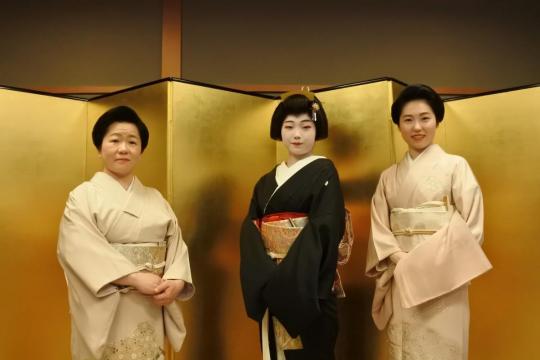
The look of Nanchi Geiko
Tachikata ※ Hairstyle: Geiko Shimada Katsura ※ Kanzashi: Kushi, Maezashi, Hirauchi in the back. Nemaki cut around 1 year after debut. At occasions which require the wear of Kuromontsuki, additional Bekkô Kogai is worn in the back. New year's celebrations see the addition of a rice husk in front and the Hirauchi may be swapped for prong kanzashi with coral Tama. In July and August, Kushi, Hirauchi, and sometimes the front pins are transparent. In September, they turn white. From October to June, they are colourful again. ※ Make-up: both lips painted, Oshiroi ※ Eri: white ※ Kimono: Hikizuri. Kuromontsuki have white lining. Komon pattern seems to be very popular. ※ Obiage: red, during the summer months pink (also applies to Juban colour) ※ Obi: Taiko Musubi ※ Obijime: flat, single knot ※ Footwear: mostly Geta, Zori are worn with Montsuki Kimono

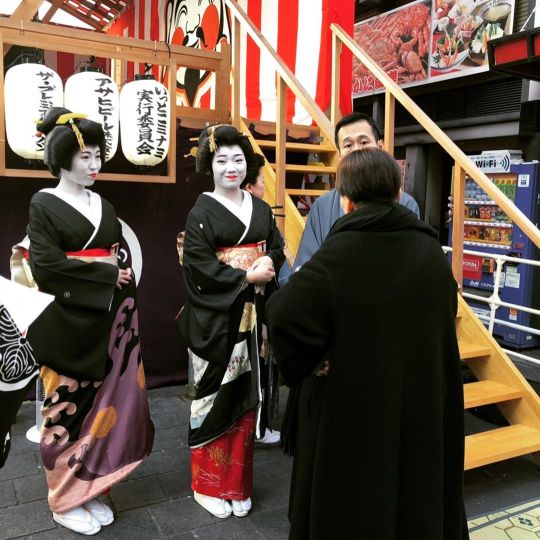

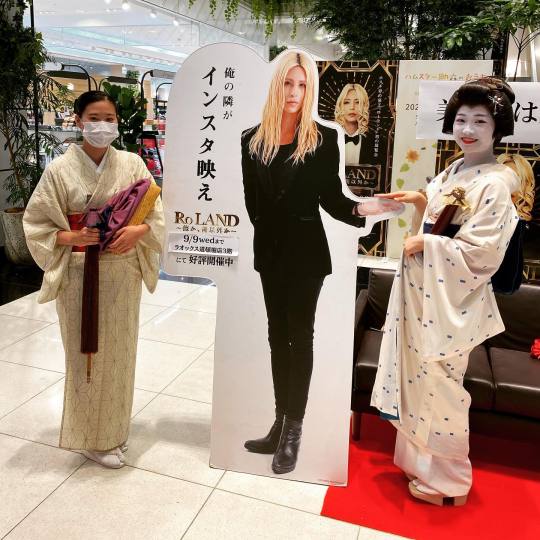
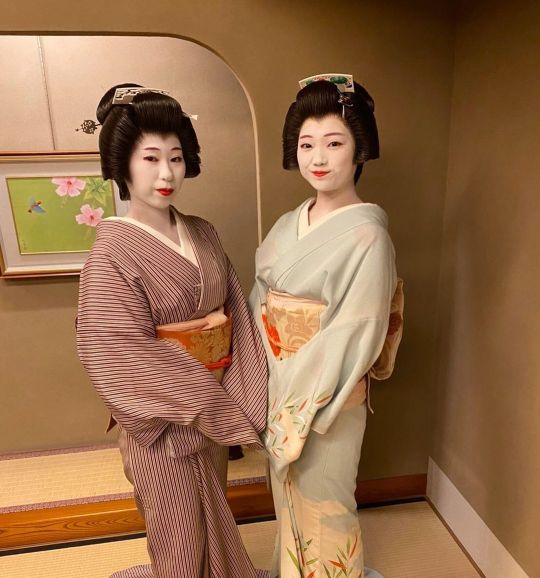


Jikata/Minarai/"casual" outfit ※ Hairstyle: Yôhatsu or simply combed back with a bun ※ Eri: white ※ Kimono: mostly Hômongi, but also Komon and Iromuji ※ Obiage: warm pastel colours, mostly pink and beige ※ Obi: Taiko Musubi ※ Obijime: flat or round, single knot ※ Footwear: Zori
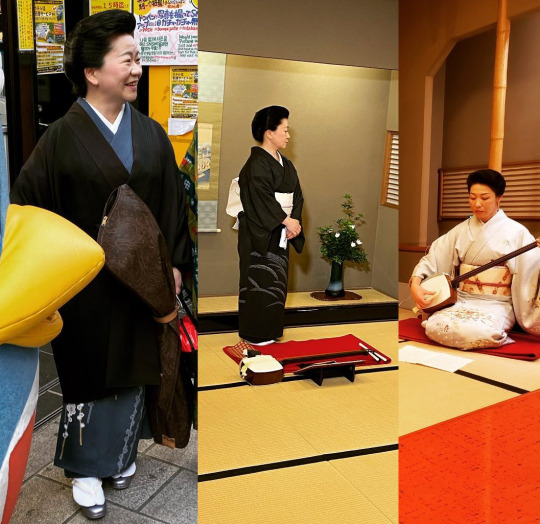

Notes: ※ Tachikata have the opportunity to wear the "casual" outfit instead of Katsura+Hikizuri (Tamizuru did so five to six months after her debut) ※ the two Jikata who debuted since 2019 didn't appear in promotional photos after their debut, but sometimes, you can get a glimpse of them ※ Minarai wear the "casual" outfit until a few months before their debut. Their professional names are revealed around 1 month after becoming minarai. ※ Minarai wear a "practise Katsura" rented from Imanishi. They receive their individual Katsura shortly before their debut. ※ every year on 14. June, the Ochaya owner and Geiko (and others who are unrelated to the Hanamachi) appear in public wearing dark-coloured Iromuji (purple, dark blue), visiting Sumiyoshi-Taisha shrine, where a ritual called Otaue shinji (御田植神事) takes place. It has been designated as an "important intangible Folk cultural Asset" by the national government as one of the most representative rituals in Japan. ※ before the debut of Yaezuru, Tamizuru and Tamako, Geiko from Nara and Kitashinchi were frequent guests at Tanigawa ※ Miyagawacho Geiko Tae (多栄) was originally working as a Geiko named Fukuemi (福笑) in Nanchi, before retiring in 1993. She continued to teach Nagauta in Osaka until she debuted as a Geiko again in 2017 ※ once again, thanks a lot to @geimaiko for inspiration and allowing me to use her layout. Go and check out her blog if you're interested in the Hanamachi! Lots of interesting stuff to read!
Sources: Sumiyoshi 1║Sumiyoshi 2║Otaue Shinji║║Fukuemi║Nara Geiko with junior Owner of Tanigawa║1935 population numbers ║kanzashi terms ║ Fukuzuru instagram story from 7. Dec 2024║Q&A with Marizuru in her instagram stories in July 2024
Picture sources: debut 2019║Tamako back║new year (couldn't find the original source. If you know, pls contact me and I'll add it)║Ichizuru+Tamako║summer 1║summer 2║Katsura back view║striped Hikizuri║Yaezuru 1║Yaezuru 2║Orizuru║Ichizuru+ Tamako 1║I&T 2║I&T 3 ║I&T 4
86 notes
·
View notes
Note
Hi there I thought about you when I saw this new Aoi ukikake ❤️ https://www.instagram.com/p/DCmScblSFW4/?igsh=MTNlYnk5czBxejd6cQ==
Hope youre doing well
Hello Anon
Thank you for sending it it! I haven't been keeping up with Aoi so i was struck by how she changed and matured into a more vibrant Tayuu as represented in these pics!
She looks so confident in her role, sporting the Yoshino mage and an uchikake with a dominant phoenix and peony motif. On the one hand the Yoshino mage can be considered one of the most important Tayuu hairstyles, being an homage to the great Yoshino Tayuu. On the other hand the uchikake sports deep and energetic colors like red, green and black. The latter was historically reserved for the most financially successful Oiran of the Yoshiwara. This in combination with the prominent and traditional Tayuu red, the entry ticket to the royal palaces, states: "I'm at my best" which i hope is true for Aoi!
While the peony has been considered the "King of Flowers", the Chinese phoenix has been connected with the Japanese Empress for millennia: It's been said to descend from heaven in time of need to relieve distress and dreaming of a phoenix was a good omen and so it was connected to the passive yet powerful role of royal women.
If we examine this through the lens of the Tayuu, there are actually a few parallels. While Empresses were expected to live secluded, spiritually active lives as crown jewels of an empire, so the Tayuu were considered the most precious flowers in the Hanamachi, only equal to the men and the arts they devoted themselves too. Tayuu lived secluded too, either learning or practicing. Even though it all was in service to men, the Empress was headed in the exact same direction. It was no surprise that the most powerful leaders needed an equal partner to converse with- As royal women were not expected to share their knowledge with men, so the Tayuu filled this gap. As some Empresses donated to temples and defined their spirituality through alliance with them, so emulated the Tayuu.
These pics were taken in November at the Tayuu Dochu in Jocho-Ji Temple in Kyoto. A few notes on that: The most famous Tayuu Dochu is usually in April and it is a privilege of the Wachigaiya Tayuu to pay their respects to Yoshino Tayuu II (she was the financier of the famous red Mon of the grounds) during this ceremony. Historically there would have been three annual Dochu: The Cherryblossom Parade in April, as still upheld today, The Parade for Irises in summer and then the autumn parade to celebrate the Chrysanthemums. The autumn flower is also considered an imperial flower, it is the symbol of Japan to this day, again linking the Tayuu to royalist symbolism.
It's an interesting note that this temple is an intersecting scene for all Tayuu of Kyoto. Aoi has been paying her respects for years here, just as well as it being a hotspot to see Wachigaiya Tayuu out in the flesh. In a sense it's incredibly fitting for Aoi to flaunt off her seniority in the ranks of Tayuu and also her financial pull in a place where a legendary Tayuu left her spiritual marks through her generosity. Hopefully we get to see many more appearances on these grounds!
Again, thank you for sharing and stay safe.
8 notes
·
View notes
Note
Thanks for sharing!
I remember the doc somewhat though it's been a long while. Hanayo was a cool bean for sure. She seemed very unbothered and i found her insta quite insightful too: Clearly her family is her priority. She got married to a German man right? A musician if i remember correctly and then she dabbled in the same field through his influence. The light traces she left behind were without comparison even though she didn't impact the Hanamachi like the senior Geisha with decades of dedication do. For sure she was one of a kind.
Hi! I'm the Hanayo person, Hanayo was a Mukojima Hangyoku, she started her career in 1989 and retired in 1995, she moved to Germany after and began making artistic experimental music. She had children and ultimately stayed in Germany. However, she was very popular as a Hangyoku, specifically for her strange behaviour. Her behaviour was described as outrageous, much as to her older sisters annoyance, she was far more popular than they ever were. She also met several celebrities. 1/2
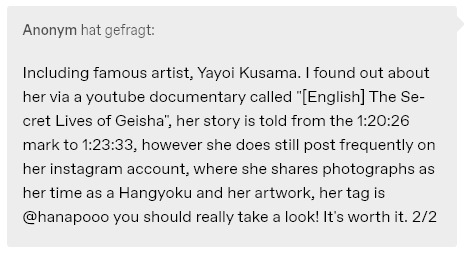
Thank you for the clarification! Indeed, I heard of her before (she was mentioned in this post by fellow blogger Geimaiko), but forgot the name, or which district she was from. The secret lives of Geisha, I've watched it and with Arthur Golden and Peter Macintosh as interview partners, IMO it's not exactly a high quality docu (but being from 1999, it offers insight to days before internet made everything so much more accessible). If anyone wants to watch it, the link is here: https://www.youtube.com/watch?v=4b4khFSChd4 Hanayo's insta is here: https://www.instagram.com/hanapooo/ Yooo @geimaiko! You might find this interesting too?
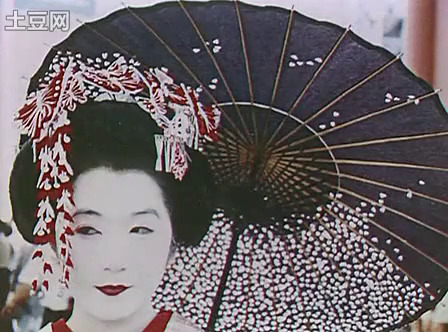

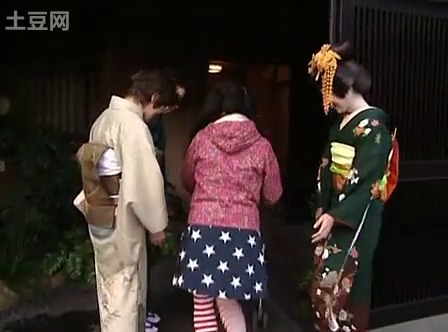
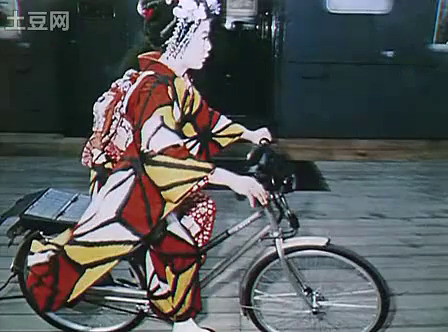
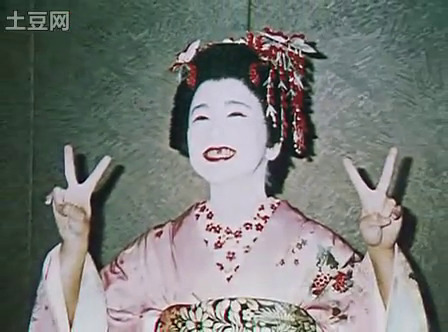
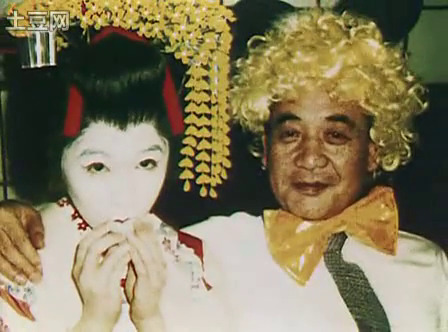
31 notes
·
View notes
Text
Amazing work as always!
Companions huh? Is that like a hostess equivalent? I would be thrilled by a more in depth analysis of their profile.
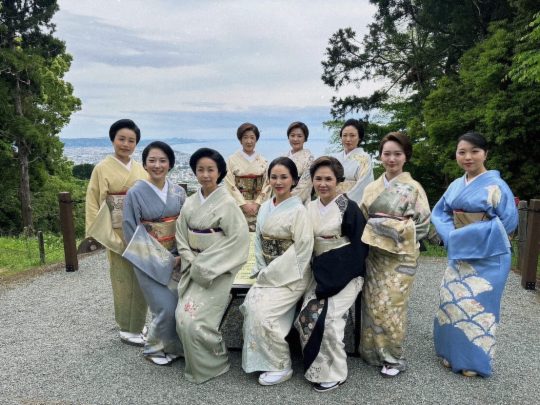
The look of… IX: Hakone-Yumoto Onsen
History Although it‘s likely that Geisha worked in Hakone since the late 19th century, not much can be found about their history. The current Kenban was built in 1950 [1]. In the early/mid 80's (before the bubble economy), 400-450 Geisha lived in Hakone [2]. The Otosan of Ikedaya Okiya reformed the traditional employment system and introduced benefits like pension plans and financial compensations for cancelled jobs [3].
In 2000 latest, the Hakone Yumoto Kenban launched its own website [4], creating a space for Okiya to advertise and look for new members [5]. In 2001, the Okasan of Wakita became the current head of the Geigi Union. In order to ensure the survival of local Hanamachi culture, the Kenban became open to public in 2008, and the Geisha band Basara (婆娑羅) was founded in 2009. [2]
In the late 2010's, around 150 Geisha from age 18 to 80 lived in 32 Okiya. Lack of work during the Corona pandemic reduced their numbers to 109 in 2021. The amount of Geisha working in Hakone has increased meanwhile, with 140 of them active in January 2024, but still hasn‘t reached its pre-pandemic levels. [2]

The look of Hakone Maiko
Local term: Kirariko きらり妓
※ Hairstyle: own hair, Shimada mage and Hanaogi mage ※ Kanzashi: Kushi, maezashi, non-seasonal hana kanzashi ※ Make up: western make up or light oshiroi, both lips painted from the start ※ Kimono: Furisode mostly without tucks (rarely with sleeve tucks) ※ Eri: white, white with embroidery (red, red/pink) ※ Obi: Koken musubi ※ Obiage: tied and tucked in, red ※ Obijime: red with simple, rectangular Obidome ※ Footwear: white or black Zori

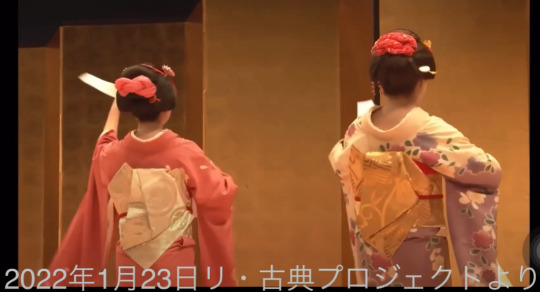
The look of Hakone Geiko
Local term: Geisha
※ Hairstyle: Taka shimada or Tsubushi shimada Katsura ※ Kanzashi: Taka shimada: Kushi, Tama in the back, Kogai in the back, and sometimes in the front too. Tsubushi shimada: Kushi, Tama ※ Make up: Oshiroi ※ Kimono: Mostly Homongi/Tsukesage, sometimes Hikizuri. Kuromontsuki for Tachikata is always a Hikizuri ※ Eri: white, rarely with white or pink embriodery ※ Obi: Yanagi musubi with Kuromontsuki (white/blue Hakata ori), otherwise Otaiko musubi ※ Obiage: always red with Kuromontsuki, otherwise white, pink or light blue. Usually not patterned. ※ Obijime: light-coloured. No Obijime with Yanagi musubi ※ Footwear: Zori, Geta with white or blue Hanao

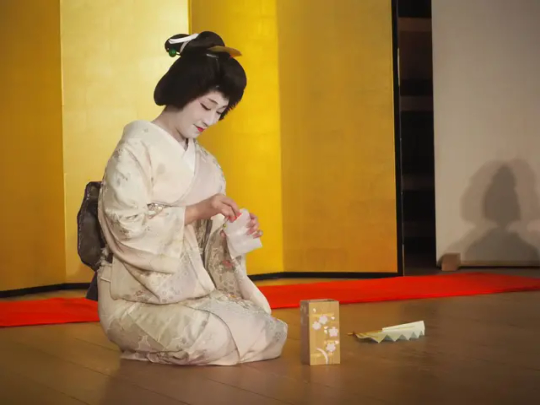
Casual/Jikata style
※ Hairstyle: Yohatsu ※ Kanzashi: usually none, maki (蒔絵) kanzashi at best ※ Make up: western make up ※ Kimono: Kurotomesode, otherwise Homongi ※ Eri: white ※ Obi: Otaiko musubi ※ Obiage: mostly warm pastel colours, but basically anything goes. Not patterned. ※ Obijime: Sometimes with Obidome ※ Footwear: Zôri

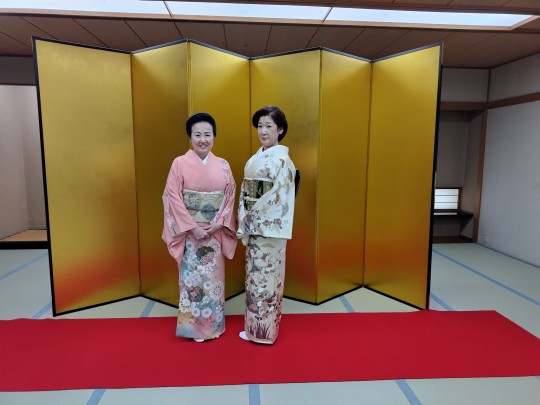

Tachiyaku style
※ Hairstyle: Maeware Katsura ※ Kanzashi: Tama pin in the back ※ Make up: Oshiroi ※ Kimono: Hômongi ※ Eri: white ※ Obi: Koken musubi with mint/light green Kakae Obi (抱え帯) ※ Obiage: red, white, pink or light blue. Obidome not uncommon ※ Obijime: light-coloured
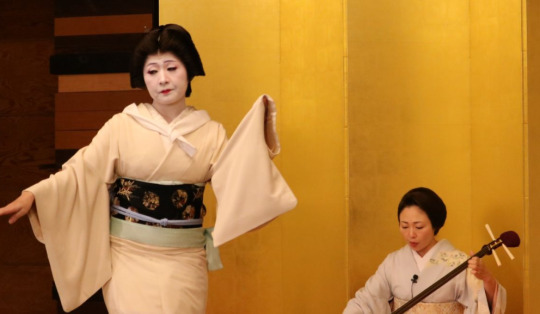
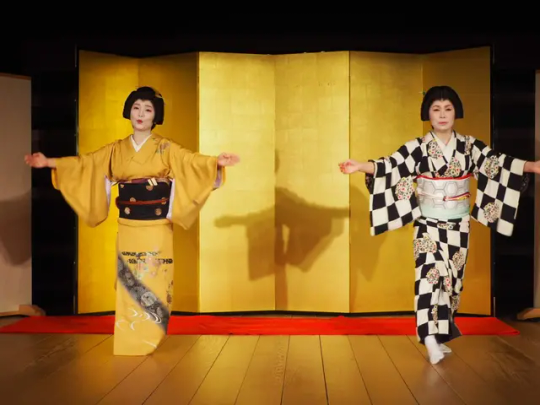
Notes
Arts: The schools taught in Hakone are Nishikawa 西川 (dance), Honjo 本條 (Kouta, Hauta and Min‘yo), Kineya 杵屋 (Nagauta) and Tosha 藤舎 (Hayashi). [6]
Kirariko is a newly coined term in use since 2003 to call junior Geisha in the age group from 18-30. [7] Upon turning 30, Kirariko have to take either a „dancer grade B“ or „dancer grade A“ test. To pass the B test, she has to perform two dances. For the grade A test, she has to perform three female style and three male style dances. [8]
Companions: Okiya recruit and employ companions as well as Geisha. Companions receive a fixed wage, which is usually lower than that of the Geisha, but the customer pays the same price. Companions can be requested to wear either western clothing or Kimono. Western clothing is a business suit provided for free by the Okiya, Kimono can be rented for a set fee by the Okiya as well. [9] Companions receive professional names like Geisha. They don‘t study performing arts and can work part-time. Their job is to serve drinks and food and engage in „pleasant conversation“ with customers at banquets. [10] In my opinion, a good entry-level job in the Karyukai – some companions became Geisha later in their carreer. [11]
Becoming independent: after being Geisha for seven years, you have the opportunity of opening a branch of your debut Okiya. In all cases I know, the new Okiya takes one or two characters from the original Okiya. For example Ikedaya 池田家 → Wakita 和喜田 and Yukieda 雪江田 (田 Kanji is part of the new name). Wakita 和喜田 → Suzuwa すず和 and Yukiwa ゆき和 (和). Kitami 㐂田見 → Kisaya 㐂茶家 (㐂).
Changing Okiya registration: only possible when becoming independent, or when your (biological) mother, sister, or daughter opens a new Okiya.
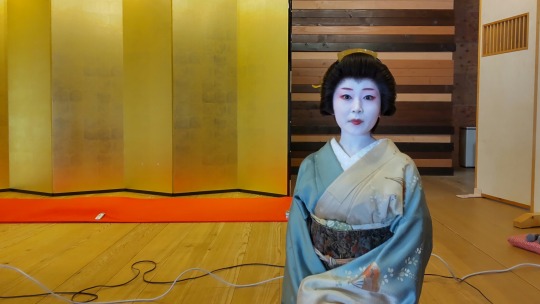
Sources
[1] https://note.com/meetgeisha/n/n1cc907ffd4c9. [2] https://www.tokyo-np.co.jp/article/301712, [3] https://conex-eco.co.jp/hakonesaisai/71824/ [4] https://web.archive.org/web/20000919171055/http://www.geisha.co.jp:80/ [5] https://web.archive.org/web/20001017234326/http://www.geisha.co.jp/okiya-name.htm,[6] https://geisha.co.jp/kenban/, [7] https://web.archive.org/web/20040408030159/http://www11.plala.or.jp/fukunoya/what_is_kirariko.html,[8] https://konohanasakuya.blogspot.com/2012/03/dance-performance.html,[9] https://yukieda.com/kyuujin_answer/, [10] https://yukieda.com/recruit/companion/,[11] https://web.archive.org/web/20080220191156/http://www.00wakita.com/hyousyou.html
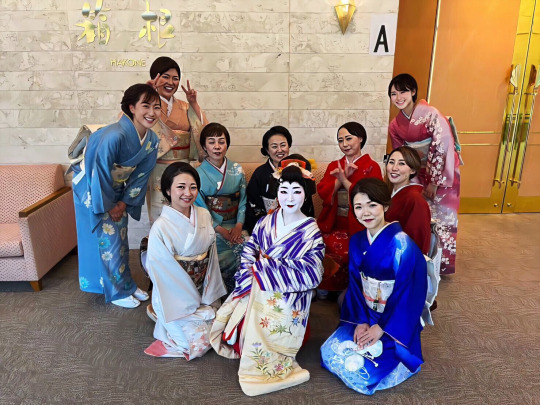
Picture sources: Group picture 2024, Hakone Odori, three Kirariko 2023, Kirariko back view 2023, Geisha dancing, Geisha preparing Tosenkyo set 2019, Sumomo with a dancer 2009, Anzu and Yuho 2023, really nice picture of Yumiko with Kokyu 2022, Chacha dancing 2022, Atsumi and unknown Tachikata 2019, Natsumi 2022, Matsuyoshi new year's picture 2023
70 notes
·
View notes
Text
Loved this post! If you find more, a series would be greatly appreciated <3

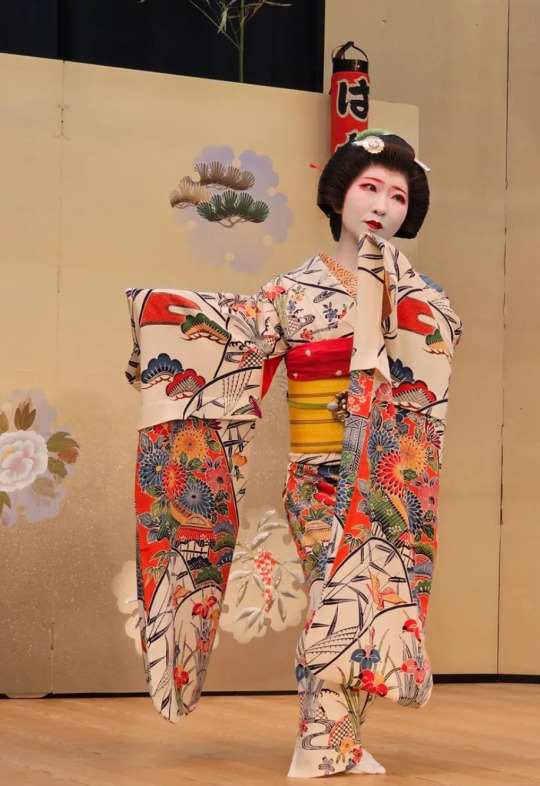
(almost) twin Furisode, showing a typical bingata pattern. Bingata is a traditional okinawan style.
left: Hanayo from Tokyo Mukojima, February 2017
photo by: Kyoto insider
right: Tamaaki from Tokyo Asakusa, May 2024
photo by: Asayuri Rin
Bonus: Chikuku from Asakusa, May 2010 (link only, cba to buy an usage license)
#maigeiko.tumblr#maigeiko#reblog#hangyoku#kimono#tokyo#hanamachi#Mukojima#Asakusa#Tamaaki#Hanayo#bingata
103 notes
·
View notes
Text
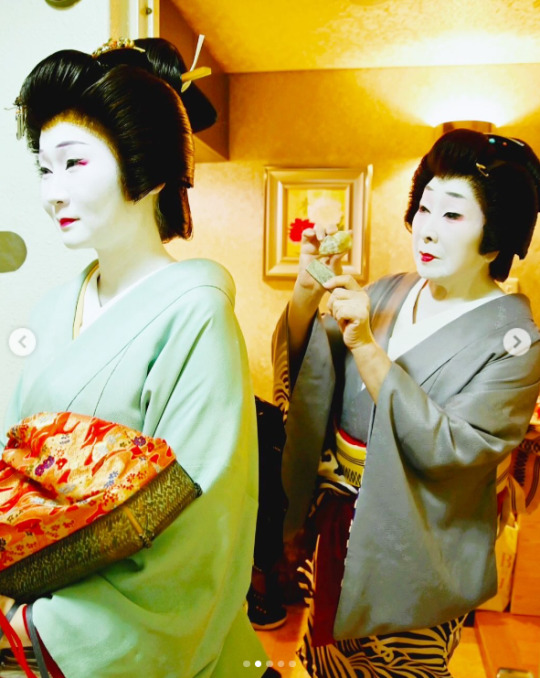
Welcome back Koume!
Many years ago the lovely Hangyoku of Akasaka was the subject of this blog when we discussed hairstyles and the traditions for the, oftentimes lonely, apprentices in the Tokyo district. Well that lovely Hangyoku has now returned to debut as a Geisha from none other than Ikuko's okiya!
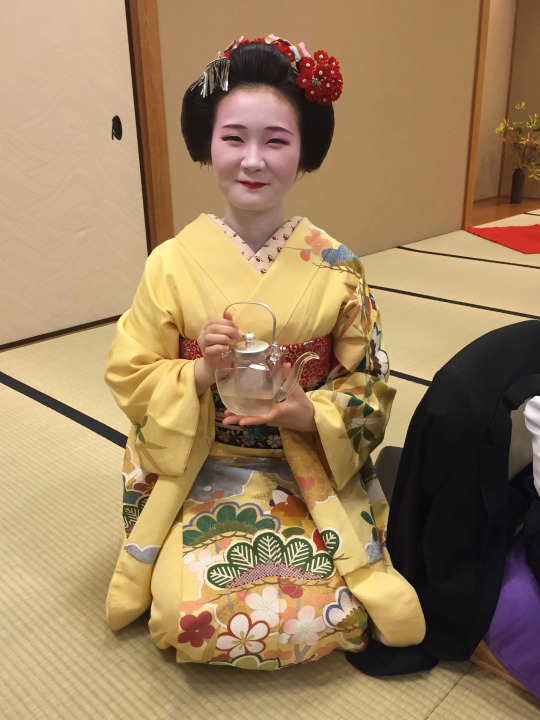
We lost track of Koume in 2017 but she seems to have had a change of heart and returned. Ikuko reports that she's very fond of musical instruments so no doubt a wonderful addition to the district. Congratulations and welcome back!
Sources: Ikuko on Instagram / Nobuhiro Murauchi blog
53 notes
·
View notes
Note
I've been looking at tons of ukiyo-e works featuring courtesans and a question keeps coming to mind that I was wondering if you might have an answer to. What sort of obi and obi knots would oiran wear? I often hear about the manaita obi and that's the type worn by oiran reenactors, but there's many different types of knots that I've seen in ukiyo-e that I was curious as to the names of and if it denoted any sort of rank difference or symbolism? Thanks!!
Hello there
Thank you for your question and your patience.
During the Edo period Obi knots for young women needed to balance the outfit first and foremost. So if you had a lavish, multilayered outfit going on with all the bells and whistles, you would have chosen a dramatic Obi and a knot to show it off:
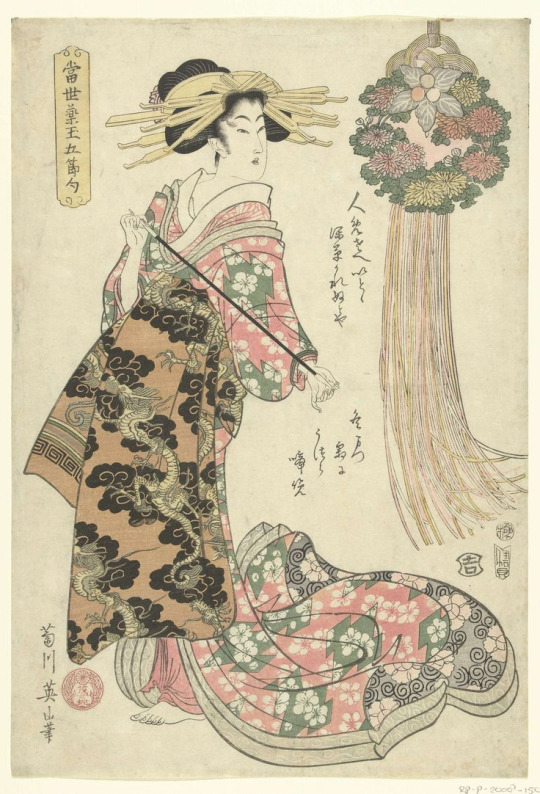
Courtisane With Pipe, in or before 1814 - Kikugawa Eizan
If a girl was just off to the baths or wandering around before getting dressed more formally, she would naturally opt for a simpler knot:
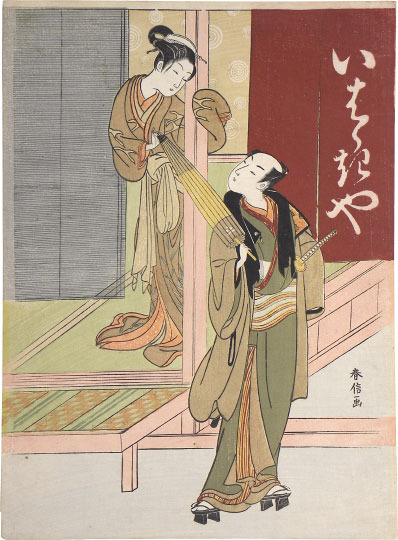
Courtesan and Customer at the Ibarakiya House -Suzuki Harunobu, signed Harunobu ga, ca. 1767-68
Obi knots have gone in and out of trends all all fashion elements do. While it was once custom for all women to tie the knot in front, eventually tying it in the back was more acceptable for townswomen. Then again the working girls stuck to their tradition of the front knots as a general rule and all women outside of licensed prostitution kept it visually separate. Since most women would never have the means to buy as many and as expensive an Obi as some of the most popular working girls, they kept the knots just as simple. The girl next door was used to dressing herself so the luxury of trying out extravagant knots would have been out of the ordinary. Tying the knot in the back however would also mean that the knot needed to lie somewhat flat or be stable enough in design to survive daily chores and errands.
Before the height of Edo extravagance, many Courtesans loved the flowy styles of a simple knot but the game of upstaging each other reached new dimensions up until we get the over the top examples that re-enactors still draw from today:
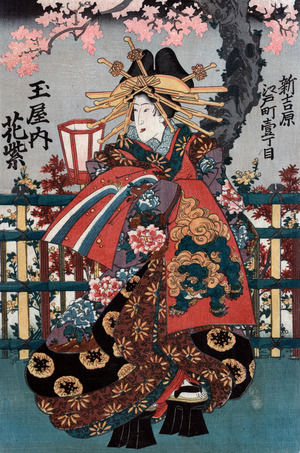
Shigeoka Of The Okamotoya On Kyo Street - ca 1848 - 1868
Of course only the most successful girls ever got to wear these pieces of art as they transcended what a regular girl would ever see in her lifetime. The most common knots for luxurious Maru Obi like these were of course the Manaiba "waterfall" Obi which made most sense for larger motifs and the Kokoro "heart" Obi for more geographical motifs. Since we know that Kyoto Tayuu often preferred small and repeating patterns, the Kokoro knot was naturally opted more over time until it became their uniform.
Then again as we go into more detail we can definitely see some niche trends that help us determine time and place of the models in the Ukiyo-e:
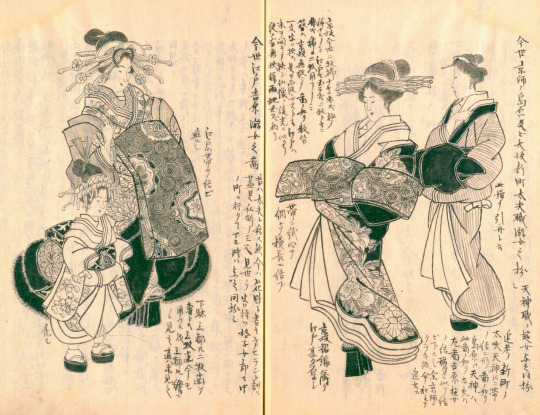
A high-ranking courtesan and attendant in Edo (left) and western Japan (right). From Morisada mankō (Morisada’s Sketches). - Kitagawa Morisada, Courtesy National Diet Library
Through the works and accounts of Kitagawa Morisada we know that the Courtesans of Edo differed in style from their counterparts in the Kanto area, where he was more at home. As he had been more acquainted with the girls in Shimabara, Kyoto and Shinmachi, Osaka, he noted some differences in Kanzashi, hairstyles and Obi knots when he finally arrived in Edo in 1840, at the age of 31. His sketches are visually stunning representations of this observation: Oiran's signature Manaiba and Osaka's famous "Airplane bow" as well as Kyoto's relatively austere Kokoro and lower Geta on the far right. Noting also in particular, that on the night of first meeting an Oiran of the Yoshiwara, customary gifts of Kanzashi or belts were in order, so a popular girl might rack up a handsome collection of beautiful Obi in her lifetime (all of which she never got to keep of course, as they were considered property of the brothels). It's safe to assume that most, if not all Obi we ever see in prints, were at one point a gift from a patron so we get a glimpse into the tastes of wealthy men in love and lust.
Funnily enough i found this image that depicts the same subject of the three different Courtesans of different districts though the differences in style were not accentuated, or dare i say, even ignored completely:
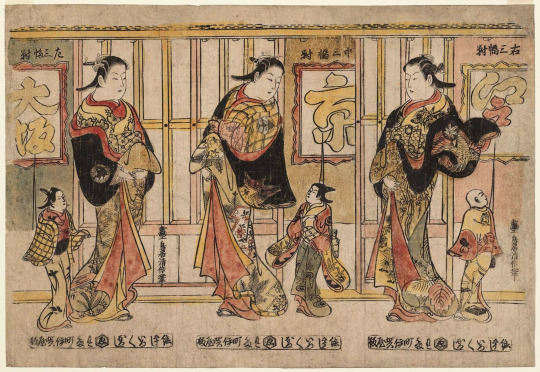
Courtesans of the Three Cities: Edo, Right Panel; Kyoto, Center Sheet of Triptych; Osaka on the Left, 1720 - Torii Kiyomasu II
Did the 100 years between the Triptych and Morisada's sketches witness an acceleration in regional fashion variety? Did girls all over the country follow a stricter fashion code in 1720 and with time develop a more unique flavor to their location? One would think that, as with time people around the world have aligned many of their fashion sensibilities through globalization, but in Japan's floating world it looks like things went the other way around. Edo during its golden age was an island of ostentatious luxury, so it might have been just an alien world to people from outside in a way.
So let's talk ranks: Absolutely could you distinguish a high ranking Chusan from a lowly Tomesode Shinzo by their Obi just as you could differ a French Courtesane:
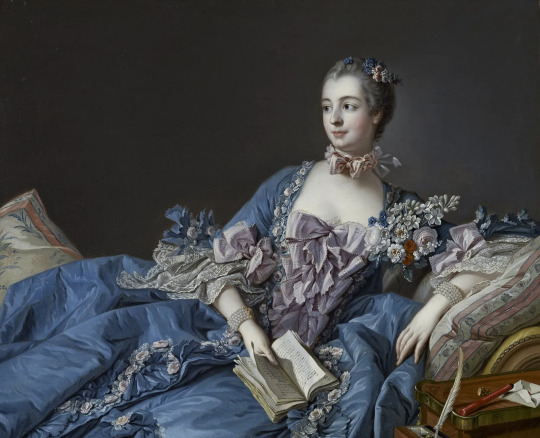
The Marquise de Pompadour, circa 1758 - François Boucher
from a lowly prostitute on the Rue des Moulins:
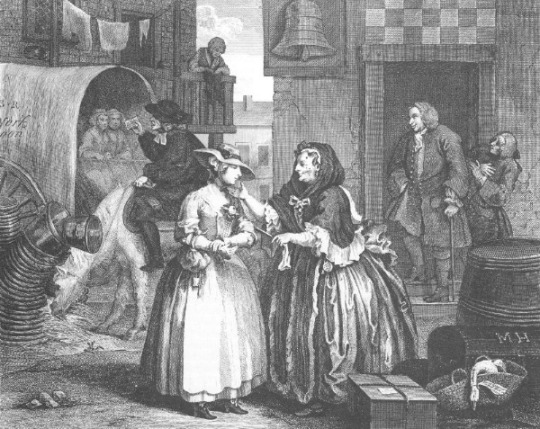
A Harlot's Progress Scene 1, 1731 - William Hogarth
But our views might be skewed a bit, as there are very few common whores displayed in Ukiyo-e. The censorship of the merchant class prohibited the display of Geisha and any girl Townspeople might have been able to afford. In that sense we have a quite narrow view of the different ranks of Courtesans in the pleasure quarters. Maybe even just the tip of the iceberg. Nobody ever depicted the ugly, the old, the unpopular but cheap girls in their basic kimono. It wasn't even a question of ignoring the average looking girls but a real threat to the artist if he was found painting these women with possible time in captivity and torture by the censors.
Might there be subtle differences in style and trend? Absolutely! What do they mean? It depends on the context.
I find it's a question of training your eye to find communalities and differences in Ukiyo-e. To learn if it's a question of time or place of trend. But never forget to consider the source as well and remember that during the Edo period and even before that, information was always presented through a lens of propaganda and class segregation. When talking about the knots that Courtesans chose, remember that there was always a time and a place, a status quo to be upkept. Even the symbolism of their Obi, the actual symbols on the cloth, are determined by the men who fueled the industry. So if a Shogun gifted an Obi with a big old Tiger in the front, it was like hiring a walking billboard for your army. A display of cultural influence as well as financial pull for the whole of Edo to admire during the grand Oiran Dochu. Ukiyo-e are snapshots of women in captivity and debt, as viewed by the romantic eye of an adventuring artist. It's like wondering how a caged bird choses their plumes. In that sense and in greater context the symbolism is about chains, figuratively and literally as there is even a pattern named The Yoshiwara Chain...
#yoshiwara#shimabara#shinmachi#tokyo#kyoto#osaka#tayuu#oiran#courtesan#obi#kimono#fashion history#red light district#yukaku#edo perido#ukiyoe
23 notes
·
View notes
Note
Hii, could I please know the difference between tate hyogo, yoko hyogo, and date hyogo? Tysm!! ^^
Hello anon, sorry for the delay
In the spirit of a picture is worth a thousand words i present to you an internet fossil that explained in English some differences:

The source is now dead but it was originally:
Nihongami Tutorial 7 by ShotaKotake on DeviantArt
I don't know if there's anything to add to the description. I have not seen any other information on the subject so until we get more in time we will stick to this.
Thank you for sending in your ask and your patience!
32 notes
·
View notes